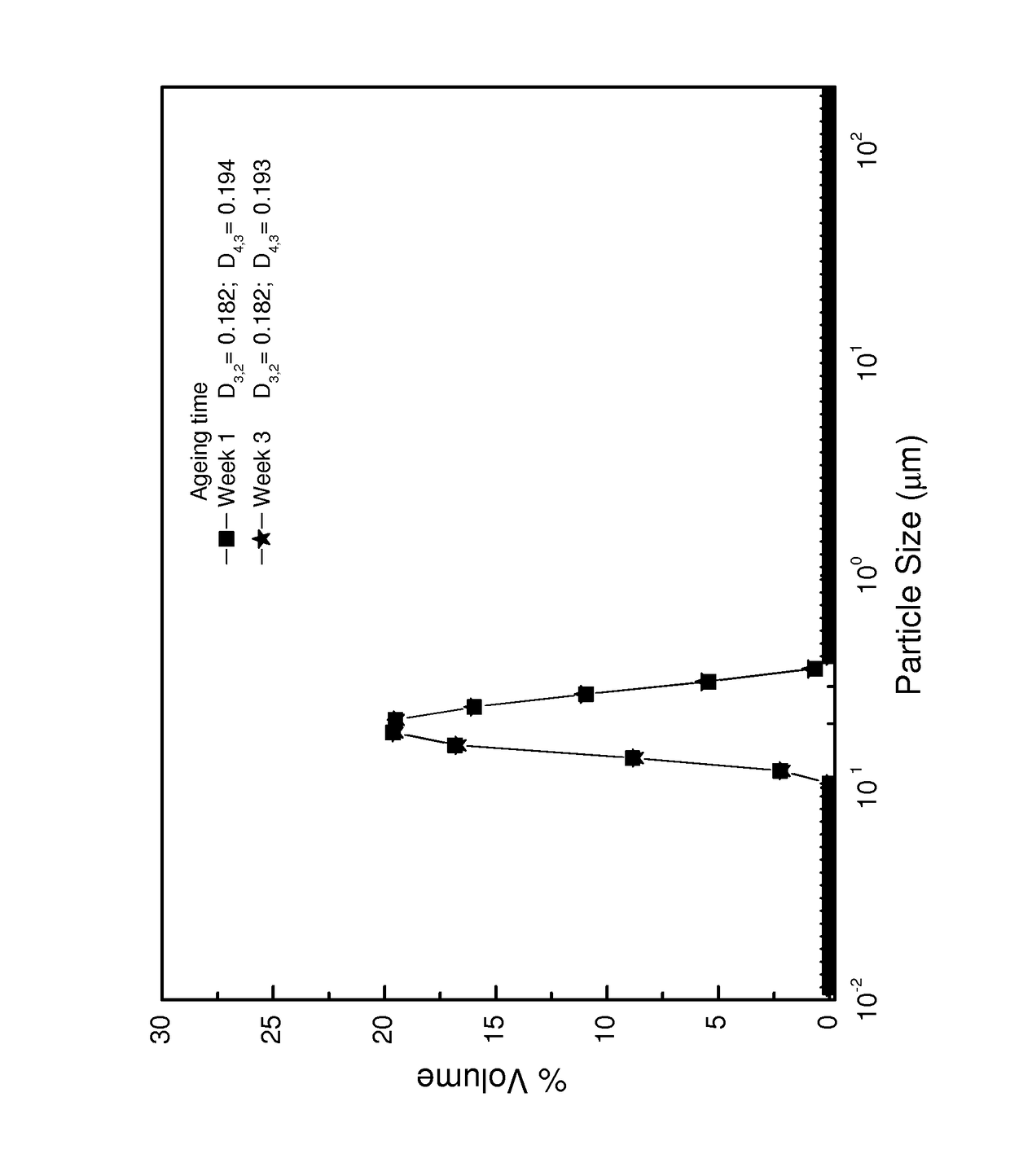Composition comprising EPA and DHA triglycerides for parenteral administration
a technology of dha triglyceride and epa, which is applied in the direction of emulsion delivery, pharmaceutical delivery mechanism, organic active ingredients, etc., can solve the problems of unrefined fish oil, prone to lipid peroxidation, and fish oil is known to degrade during processing and storage, and achieves stable emulsion, optimum bioavailability for parenteral administration, and high concentration
- Summary
- Abstract
- Description
- Claims
- Application Information
AI Technical Summary
Benefits of technology
Problems solved by technology
Method used
Image
Examples
example 1
General Procedure A for the Preparation of an Emulsion According to the Invention
[0204]Using a shear mixer, lecithin (PL90, obtainable from egg yolk=egg lecithin with a phosphatidylcholine content of 64-79% and a phosphatidylethanolamine content of 10-18% by weight) was dispersed in water for injection, at a temperature between 55-60° C., previously containing glycerol and polyethylene glycol (PEG), using a Rayneri TURBOTEST high shear mixer, until a homogeneous dispersion was obtained. Afterwards, the pH of the aqueous dispersion was adjusted to 9-10. The oil phase, containing different ratios of docosahexaenoic acid / eicosapentanoic acid triglycerides (mixtures 1 to 3), was heated to 55° C. and, then, oleic acid was added until a clear and homogeneous solution was obtained. The aqueous dispersion was then transferred to a separate container and the oil phase was added under continuous stirring, using a Rayneri TURBOTEST high shear mixer, to obtain coarse oil-in-water emulsions with...
PUM
| Property | Measurement | Unit |
|---|---|---|
| Laser Diffraction Particle Size Analyser | aaaaa | aaaaa |
| Laser Diffraction Particle Size Analyser | aaaaa | aaaaa |
| mean molecular weight | aaaaa | aaaaa |
Abstract
Description
Claims
Application Information
 Login to View More
Login to View More - R&D
- Intellectual Property
- Life Sciences
- Materials
- Tech Scout
- Unparalleled Data Quality
- Higher Quality Content
- 60% Fewer Hallucinations
Browse by: Latest US Patents, China's latest patents, Technical Efficacy Thesaurus, Application Domain, Technology Topic, Popular Technical Reports.
© 2025 PatSnap. All rights reserved.Legal|Privacy policy|Modern Slavery Act Transparency Statement|Sitemap|About US| Contact US: help@patsnap.com

